Part of a series of articles titled National Register and National Historic Landmarks Celebrate Jewish Heritage Month.
Article
Building Community on the Great Plains: B’nai Israel Synagogue and Montefiore Cemetery
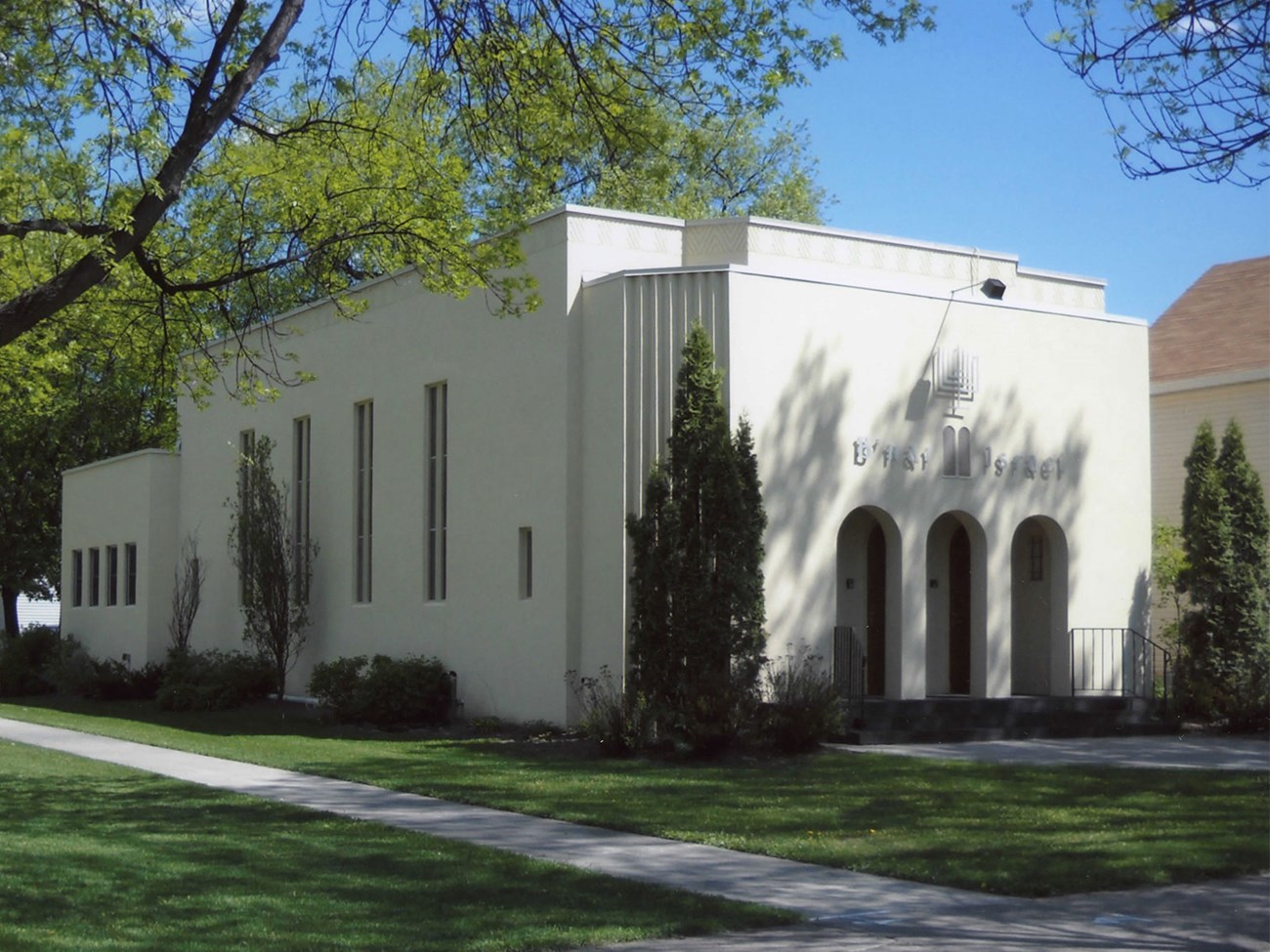
National Register of Historic Places photo by Steve C. Martens
The Road to Grand Forks
Two aid organizations—the Jewish Agricultural Aid Society (JAAS) and the Jewish Agricultural and Industrial Aid Society (JAIAS)—helped these immigrants find security and opportunity in the West. In south-central Dakota Territory, they established Jewish agricultural resettlement colonies near Ashley and Wishek, and in the northeastern part of the territory at Starkweather, Webster, Garske, Ben Zion, and Adler. However, many of the Jews who were recruited to establish farms in these areas did not have an agricultural background—in fact, most had been prohibited from owning land in their countries of origin. Their lack of farming experience, combined with rocky soils and punishing weather, as well as deep poverty and isolation from a broader Jewish community, led most of these agricultural colonies to fail. Many of these Jewish immigrants then turned to peddling or working in small stores throughout the region. Some found success here, progressing to larger stores in cities like Minneapolis, Denver, and Chicago. Several chose to stay in the Dakota Territory and made their way to the town of Grand Forks.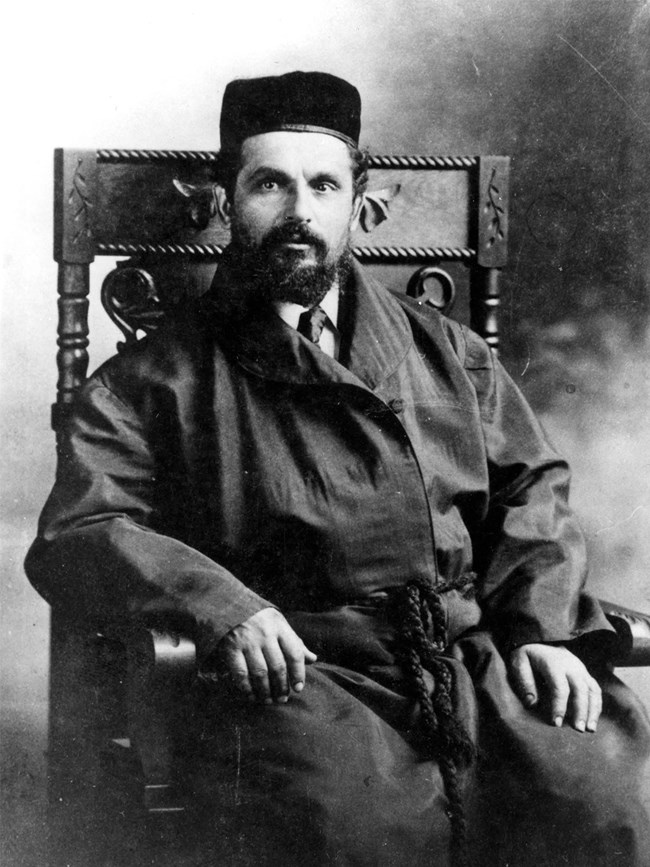
Jewish Museum of the American West
Building Jewish Community in Grand Forks
By 1891, there were 60 Jewish families and several unmarried Jewish men in Grand Forks. Many of them came from Ukraine (part of the Russian Empire at that time), while others hailed from Romania and Galacia (southeastern Poland), and five or six of these families were from Germany. These new arrivals were adherents of Orthodox Judaism, but they spoke different Yiddish dialects and pronounced Hebrew differently from each other—yet all were eager to adjust to their new lives in the United States. Together, they established the Congregation of the Children of Israel (B’nai Israel, in Hebrew) in 1891. In support of the Jewish community, William Budge, a local politician and Grand Forks Postmaster, donated a parcel to the congregation near the Great Northern Railway tracks in a thriving neighborhood of Jewish residents and businesses. On this lot, they built a wood-framed synagogue, and many of the congregants mortgaged their homes and peddling wagons to pay for its construction, which cost $3,000 (approximately $107,000 in 2024). Seating 300 worshipers, it was completed in time for Rabbi Benjamin Papermaster (who emigrated from Lithuania) to lead the Rosh Hashanah services in the autumn of 1892.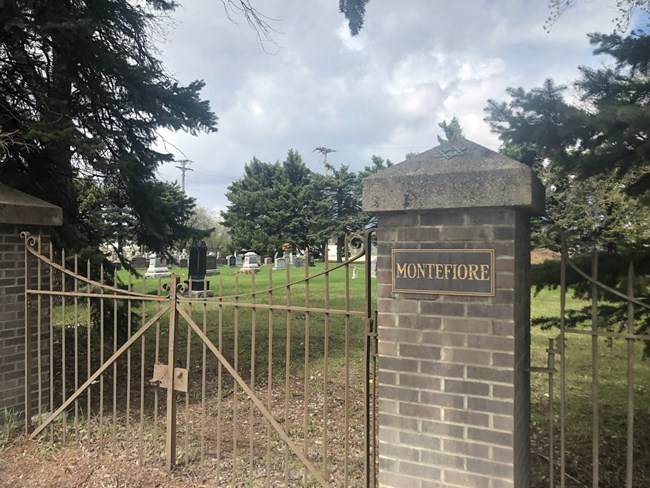
Jeffrey Powell
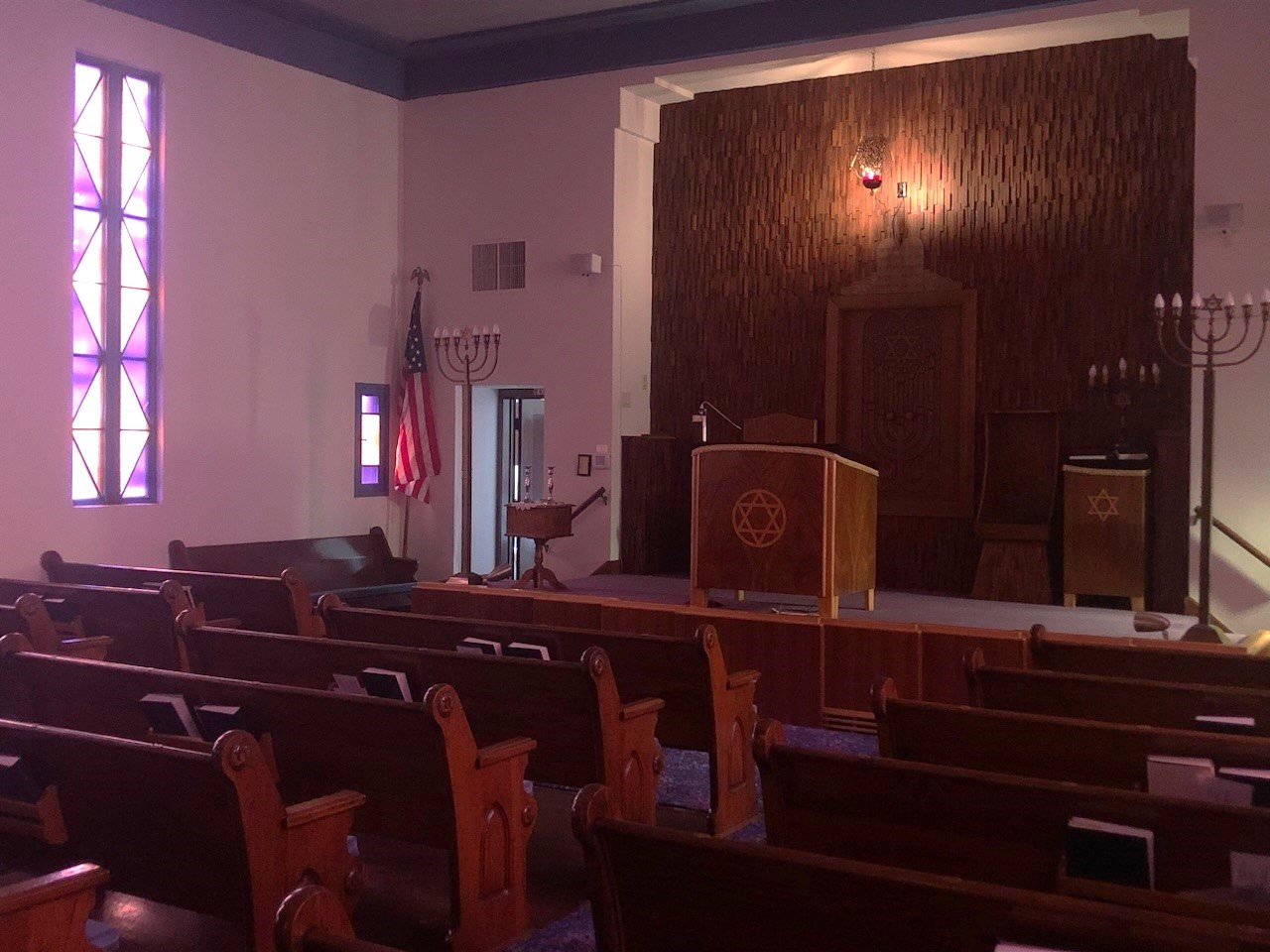
Jeffrey Powell
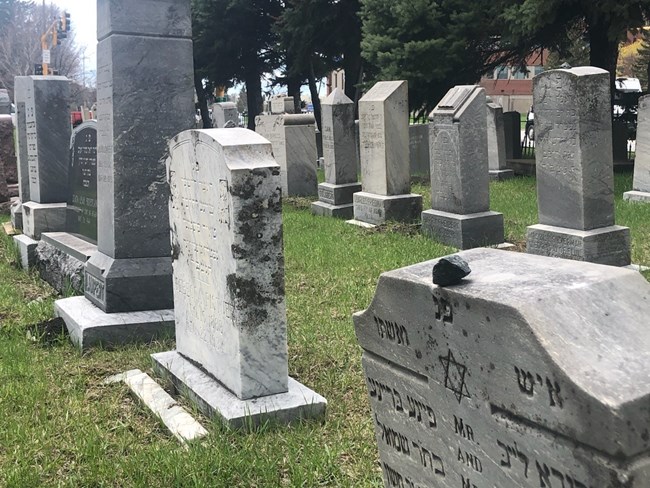
Jeffrey Powell
Preservation and Continuity
In October 2011, B’nai Israel Synagogue and Montefiore Cemetery were listed in the National Register of Historic Places. The 1937 Art Deco-styled building and the cemetery landscape established in 1888 tell the story of the social, spiritual, cultural, and civic growth of a Jewish community in North Dakota over more than 130 years. The construction of their second synagogue demonstrated the strength and longevity of Congregation B’nai Israel as well as the Americanization of its members and their acceptance by their neighbors. Together with the Montefiore Cemetery, the synagogue is a testament to the Jewish citizens of Grand Forks, the oldest and once-largest urban Jewish community in the state of North Dakota. Both the B’nai Israel Synagogue and the Montefiore Cemetery remain in active use today.This summary is drawn from the National Register of Historic Places nomination (NR Ref. 11000745) authored by Steve C. Martens and Peg O’Leary in 2011.
Bibliography
Tobias Brinkmann, “Between Vision and Reality: Reassessing Jewish Agricultural Colony Projects in Nineteenth Century America,” Jewish History 21:3/4 (2007), pp. 305-324.Steve C. Martens and Peg O’Leary, “B’nai Israel and Montefiore Cemetery,” National Register of Historic Places nomination (2011). NR Ref. 11000745. Available at National Archives and Records Administration.
Isadore Papermaster, History of the North Dakota Jewish Community (1959), manuscript available at North Dakota State University Repository.
J. Sanford Rikoon, “The Jewish Agriculturalists’ Aid Society of America: Philanthropy, Ethnicity, and Agriculture in the Heartland.” Agricultural History 72:1 (Winter 1998), pp. 1-32.
Lois Fields Schwartz, “Early Jewish Agricultural Colonies in North Dakota.” North Dakota History 32:3 (October 1965), pp. 217-231.
Last updated: May 24, 2024
